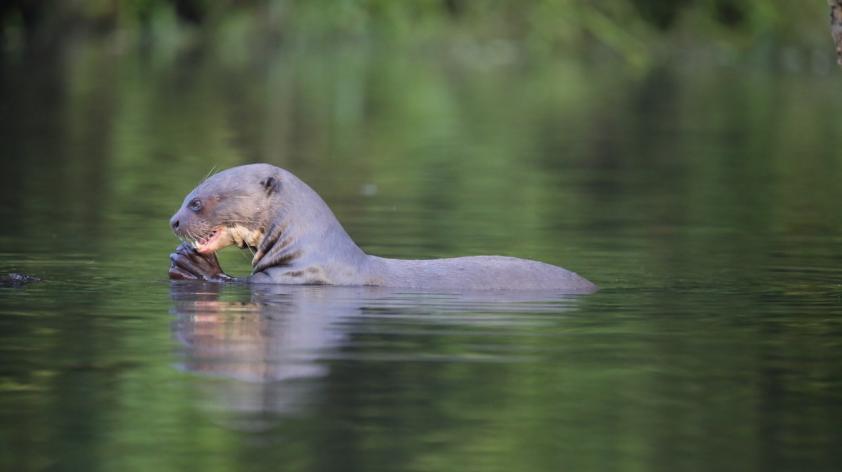
What does the future hold for Cocha Cashu Biological Station?
Times are tough for field stations and ours in the Peruvian Amazon is no exception.
Not too long ago, ecologists flocked to Cocha Cashu, undaunted by its remoteness and eager to study “nature as it should be” in this intact rainforest replete with a staggering diversity of plant and animal life.
Today, it’s different and the kind of research and researchers that once populated places like Cashu have moved on to other priorities.
The reasons for this cultural shift are complex and beyond what I can convey here in this blog. Does this mean Cashu and stations like it are no longer relevant to science and conservation? I think this question deserves a resounding “No!” but we need to re-evaluate, reinvigorate and rebrand the Station to address more modern scientific agendas.
To do this we have the help of more than a dozen researchers from various disciplines and countries. They are here at Cashu at our invitation. Most have never visited but they maintain vibrant research programs in tropical environmental science elsewhere. With their help, we will chart a bright new future for the Station and inspire a new generation of conservation-relevant research, standing on the shoulders of the giants that got us here.
We are at Cashu for three days to identify the unique opportunities offered by Cashu and how our facilities and practices may limit new research in areas such as molecular biology, plant physiology, microbiology, climate science, soil science and hydroecology.
We may have to stretch our comfort zone a little to facilitate these disciplines but if we do, we can promote new and innovative research that helps us understand how nature works. If done right, these studies will also provide a roadmap for protecting and restoring other Amazonian ecosystems.
It’s clear from the feedback that we will have our work cut out for us.
Maybe we need to build and equip a small lab to process samples and conduct basic lab work. That’s no easy task for a station three days’ journey by boat and dirt road to the nearest city of any size.
Maybe we need to collect and curate all the “legacy data” collected by generations of investigators over the station’s five-decade history. We are celebrating our 50th anniversary this year! These data will serve as important reference points for climate and plant and animal communities to begin to examine how climate change may be influencing even this remote rainforest with no other human impacts.
Or how about a network of space-age sensors recording temperature, rainfall, water pH and other variables combined with the latest tracking devices fitted on animals of all kinds? With data like this, we could really learn how animals select and use their habitats and move through the forests and lakes of Cashu. The possibilities are challenging but their pursuit will be exciting and rewarding.
Of course, we can’t bring these scientists all the way to Cashu and keep them cooped up in meetings all day, so we built several outings into the agenda to explore and walk the trails of Cashu and visit the oxbow lake in canoes.
This boots-on-the-ground experience will familiarize the workshop participants with the constraints and opportunities of working here. And of course, an ulterior motive we freely admit to is that they, like we and many others have done, will fall in love with the nature of Cashu and return to establish their own research programs here.
Together, we can do this.













